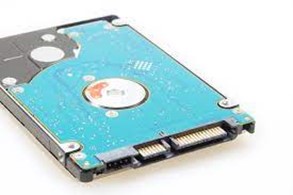InnoGrit Corporation, established in 2016 by industry experts including CEO Dr. Zining Wu, is revolutionizing data storage through its cutting-edge PCIe Gen 4 technology SSD controllers. These controllers bring about a paradigm shift in reliability, performance, and energy efficiency, unleashing the full potential of next-generation NAND flash memories. In the following article, InnoGrit Corporation debunks a few of the common SSD misunderstandings, setting the record straight on what SSDs are truly capable of. InnoGrit separates fact from fiction and uncovers the real potential of this transformative technology.
People rely on storage devices – whether the individual is a photographer who needs to store photos, a gamer who wants to jump back from their last saved game progress, or an entrepreneur who has to record their monthly sales.
For the longest time, HDDs (Hard Disk Drives) kept computer data. But in recent years, a new storage device emerged – the SSD.
However, due to misinformation, many wonder if upgrading from HDD to SSD is worth it.
InnoGrit Corporation reviews these common SSD myths and misconceptions – debunking them one by one.
InnoGrit Corporation Says SSDs are Not Costly
The price of SSDs has been a common concern – some think it’s too expensive to purchase. However, that’s untrue.
While SSDs may have been expensive when they were first introduced to the market, these days, SSDs are much cheaper.
InnoGrit Corporation notes that moreover, despite being slightly more expensive than HDD, the advantages of SSD outweigh the HDD.
One of those advantages is its durability.
Durability Myth: SSDs Break Easily
InnoGrit Corporation says that all storage devices wear out over time. However, there has been a misconception that SSDs are unreliable – as they break easily.
This is also a myth.
Not only are SSDs more advanced compared to HDDs, but manufacturers also frequently improve and upgrade SSDs – for them to last for several years.
In addition, HDDs use circular metal plates that spin. In most cases, HDDs break when the moving parts malfunction, leading to corruption or data loss.
InnoGrit Corporation notes that on the other hand, SSDs use silicon microchips and are non-mechanical. Therefore, they’re not as prone to breakage.
But to maximize an SSD’s durability, users should not leave SSD device un-powered for longer than 3 months. Users can also enable the TRIM command – an Advanced Technology Attachment interface – to delete unused data, aiding in better performance.
However, people typically enable TRIM to boost efficiency. It doesn’t mean that SSDs can’t store big data.
Storage Misconception: SSDs Cannot Store Big Data
InnoGrit Corporation says that as more people relied on computers, the storage size expectations also grew. At the time, most people relied on HDDs to store data when gadgets were bulky. Therefore, manufacturing HDDs with large data storage capacity wasn’t a problem.
Perhaps the common misconception about SSDs not being capable of storing the same amount of data is due to their much smaller size. However, there are many SSDs available in 8TB to 16TB.
However, just because a computer was made much earlier than 2023, it doesn’t mean it’s incompatible with newly released SSDs.

Compatibility Myth: SSDs Can Only Work with Modern Devices
InnoGrit Corporation explains that there’s some truth to SSDs and their incompatibility with older computers. However, these computers are typically old (several years to over a decade old).
But as long as it’s equipped with a SATA (Serial Advanced Technology Attachment) bus interface, it’s possible to upgrade to SSD.
Furthermore, some people with older computers can also turn an SSD into their external hard drive. All they need is a SATA adapter.
However, some reasons why an SSD is incompatible with a computer can be due to the following:
- An outdated motherboard.
- A computer that runs on an outdated OS (such as operating systems released before 2006).
- An incompatible motherboard SSD slot.
- A Pentium 4 computer model.
If these diagnoses still don’t solve the SSD compatibility problem, consider asking for help from a computer technician to fix the issue.
However, slight issues shouldn’t dissuade someone from upgrading to an SSD.
Functionality Misconception: SSDs Are Not Worth Buying
InnoGrit Corporation notes that it’s hard to keep updating gadgets – especially when newer ones keep emerging. However, there are several reasons why people upgrade their storage devices from HDD to SSD.
Some key takeaways are:
- SSDs are faster.
- They’re more compact.
- SSDs create less noise.
- They consume less energy.
Conclusion
InnoGrit Corporation explains that more people need to upgrade to SSDs – they’re not only cheaper. But SSDs are also faster and more reliable in storing data.
If SSD shopping is too overwhelming, check reviews and prices – or ask a computer expert for assistance. They’re all willing to help, as they, too, believe that the future of storage data lies in SSDs.

